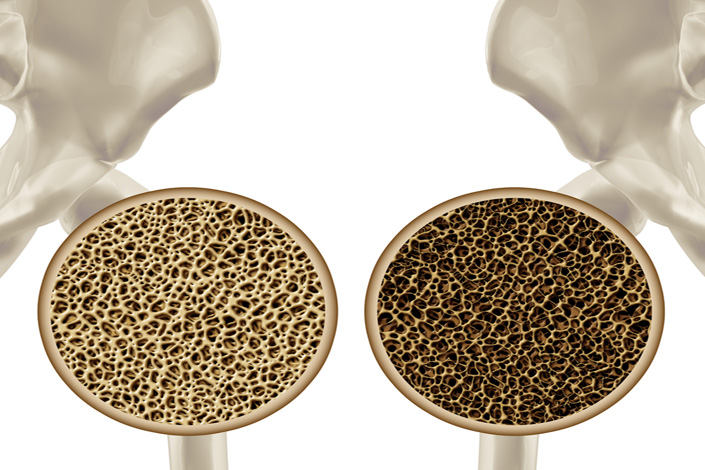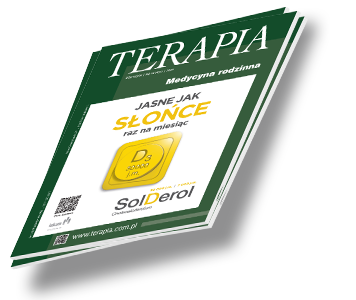Choroby wieku podeszłego Terapia 2020, 11 ( 394 ) : 70 - 76
Osteoporoza – profilaktyka i leczenie
Osteoporosis: Prevention and treatment
Considering the complex etiology, a holistic approach to the prevention of osteoporosis seems necessary, beginning with education and lifestyle modifications aimed at reducing risk factors, in addition to effective treatment of diseases causing secondary osteoporosis, and finally dietary measures including, when necessary, vitamin D and calcium supplementation. Correct diagnosis is also an important issue. Qualification for pharmacotherapy of osteoporosis is based on the occurrence of low-energy fractures, assessment of 10-year probability of fracture with the FRAX calculator and the determination of reduced bone mineral density in DXA.
In pharmacological treatment, depending on the clinical situation and the patient's preferences, possible ways of treatment consist of orally or intravenously administered bisphosphonates, denosumab, teriparatide or raloxifene. A necessary condition for the administration of each of these is the correct concentration of calcium and vitamin D in the serum.
In addition to pharmacotherapy, extremely important options, especially in the elderly with diagnosed osteoporosis, include multi-profile interventions aimed at reducing the risk of low-energy fractures, such as evaluation of the occurrence of sarcopenia, frailty, malnutrition, orthostatic hypotension, corrective glasses or hearing aids prescription in cases of sensory deprivation and, finally, advice concerning useful changes in the architecture of the patient’s apartment.
Według szacunków Narodowego Funduszu Zdrowia (NFZ) w 2018 r. w Polsce liczba złamań osteoporotycznych przekroczyła 125 tys., a średni wiek pacjentów nimi dotkniętych wynosił 73 lata. Liczba chorych, którym udzielono świadczeń związanych z osteoporozą, określona za pomocą współczynnika chorobowości rejestrowanej, w 2018 r. wyniosła 555 tys. Ocenia się, że liczba ta jest jedynie niewielką częścią wszystkich osób dotkniętych tym schorzeniem w naszym kraju – według raportu NFZ niedoszacowanie osteoporozy w 2018 r. przekraczało 70%.

Zaloguj się i przeczytaj bezpłatnie całą treść artykułu.
Nie masz jeszcze konta dostępowego?
Zarejestruj się bezpłatnie, a otrzymasz:
* dostęp do wszystkich doniesień oraz pełnych tekstów artykułów naukowych w naszej Czytelni,
* prawo do bezpłatnego otrzymywania newslettera "Aktualności TERAPIA" z przeglądem interesujących i przydatnych wiadomości ze świata medycyny oraz systemu ochrony zdrowia w Polsce i na świecie,
* możliwość komentowania bieżących wydarzeń oraz udziału w ciekawych quizach i konkursach.
Zapraszamy serdecznie, dołącz do naszej społeczności.



Dodaj komentarz